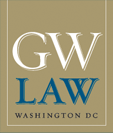Document Type
Article
Publication Date
2014
Status
Accepted
Abstract
For over 150 years, federal copyright law in the United States reflected and reinforced the model ofmusic as a two-stage art of composition and performance. Copyright protected scores, the stable, visually perceptible result of the deliberative activity of composition. It did not protect performances, theevanescent, unrepeatable, purely aural realizations of scores. Even as protection was extended tomusical sound recordings, copyright law has maintained a strong distinction between composition andperformance. In the last several decades, however, developments in sound technologies and their uses by musicians and listeners have substantially undermined that distinction. Written notation often no longer figures in any stage of producing a musical recording, and the roles of composer, musician andproducer are blurred as composition, performance, recording, synthesizing, sequencing, sampling, editing, processing, and mixing are accomplished iteratively within a digital environment. An empirical study of 4.5 million copyright registrations presented as part of this article demonstrates that while 86%of musical work registrations in 1978 were accompanied by deposits of written notation, by 2012 only 17% were. Copyright law, however, is still routinely interpreted to require the isolation of compositionaland performance elements of sound recordings.
This article argues that copyright law should cease trying to divide musical sound recordings intocomposition and performance elements, and should recognize phonorecord-embodied musical works as a distinct category of works of authorship. It makes the case that the 1976 Act could be interpreted to accomplish that change, but it also argues that the Act should be amended if necessary. An approach that recognizes that phonorecord-embodied musical works are distinct from notated musical works andare protectable on their own terms, can potentially better serve the purposes of copyright law in at least three ways. First, such an approach would be more consistent with the basic understanding that substantial similarity in music is to be evaluated through the comparative aesthetic appeal of listening experiences. Second, it would help to enable creators of all aspects of those listening experiences to enjoy the incentives and benefits of authorship. Third, it could be a step towards recognition of unitarycopyright in some musical audio works.
GW Paper Series
GWU Law School Public Law Research Paper No. 2014-4; GWU Legal Studies Research Paper No. 2014-4
SSRN Link
http://ssrn.com/abstract=2400170
Recommended Citation
Brauneis, Robert, Musical Work Copyright for the Era of Digital Sound Technology: Looking Beyond Composition and Performance (February 23, 2014).
